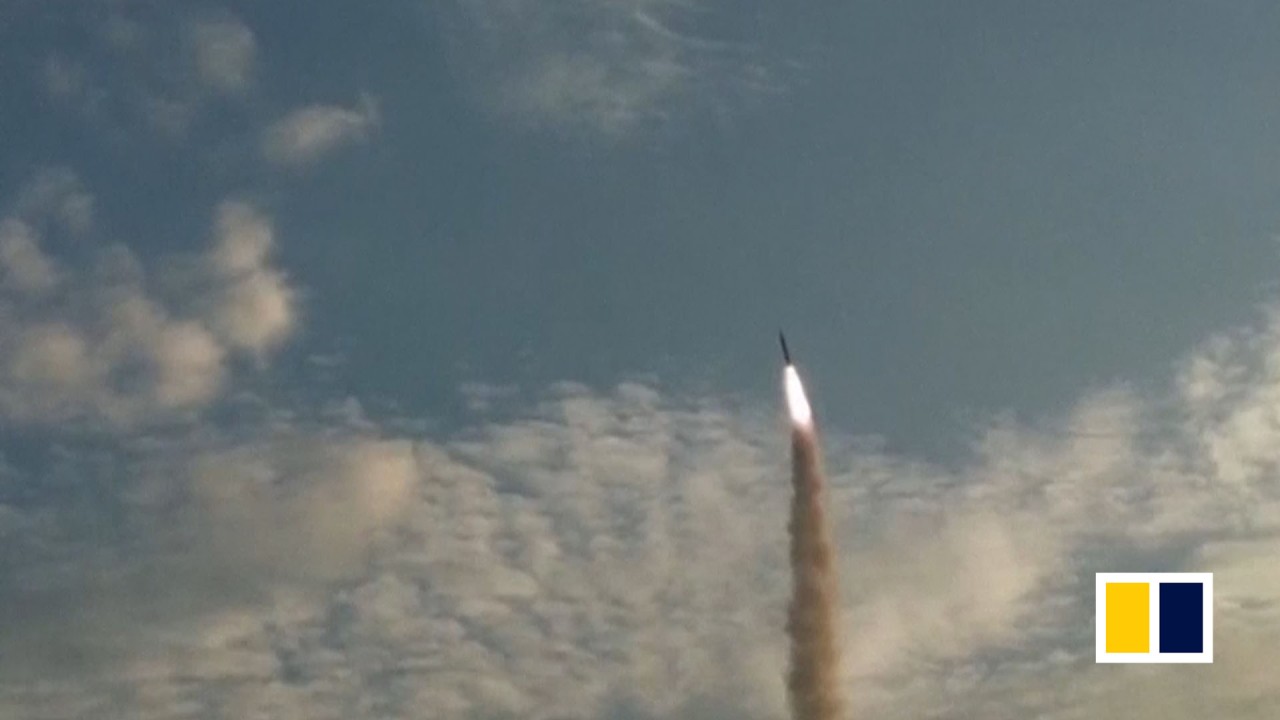
US satellite could detect Chinese hypersonic missiles, but could it stop them?
- Prototype for satellite that will help US track hypersonic threats reportedly passes design review, clearing the way for it to be built
- Hypersonic weapons’ trajectory makes their destination difficult for anti-missile systems to calculate
A report from C4ISRNET, a US-based publication covering emerging issues and trends in global military transformation and network-centric warfare technologies, reported on Wednesday that a prototype satellite that will help the US Missile Defence Agency track hypersonic threats had passed a critical design review, allowing contractors to make it.
Named the Hypersonic and Ballistic Tracking Space Sensor (HBTSS), it will operate in low Earth orbit as part of a constellation of hundreds of satellites, according to the report.
In January, the US Missile Defence Agency selected L3Harris Technologies and Northrop Grumman to design, build and demonstrate prototype satellites for the HBTSS. L3Harris was awarded US$122 million, while Northrop Grumman was awarded US$155 million.
“The combination of high speed, manoeuvrability and relatively low altitude of some of the emerging advanced missile threats makes them challenging targets for our current missile defence systems,” the US Space Development Agency explained when it issued the contracts.
“HBTSS is needed, since we cannot populate the Earth and the oceans with terrestrial radars to meet this need.”
Chinese military expert Zhou Chenming said that hypersonic weapons were harder to detect than traditional missiles, because their trajectory made it difficult for anti-missile systems to calculate their destination.
“But a low-orbit satellite constellation like Starlink has the potential to detect and track hypersonic missiles,” Zhou said. “This system has one big weakness: expensive maintenance.”
Commentator and former Chinese military instructor Song Zhongping said that even if the HBTSS could detect and track hypersonic missiles, whether the US could attack an incoming hypersonic weapon was another question. “The HBTSS might have solved the detection issue, but hypersonic weapons are not easy to intercept,” he said.
Song agreed with Zhou’s assessment that the US would need to set up a constellation of satellites to monitor the flight of hypersonic missiles on a global scale.
In August, China tested a nuclear-capable hypersonic missile that circled the globe before speeding towards its target, demonstrating an advanced space capability that caught the US by surprise, the Financial Times reported last month.
A hypersonic weapon can fly at faster than five times the speed of sound. It can be used to target or deflect an enemy country’s defences against a hypersonic attack, offering a strategic edge.
US arms manufacturers such as Lockheed Martin and Raytheon Technologies have been developing hypersonic weapons technology for nearly three decades. The Pentagon’s 2022 budget request for hypersonic research was US$3.8 billion, up from US$3.2 billion this year.
Russia and India also have hypersonic weapons. Those of Russia, including the 3M22 Zircon, can fly at six times the speed of sound and penetrate traditional anti-missile defence systems.
India tested an indigenously built hypersonic weapon in September. It is also developing a hypersonic cruise missile, the BrahMos II, in cooperation with Russia.



